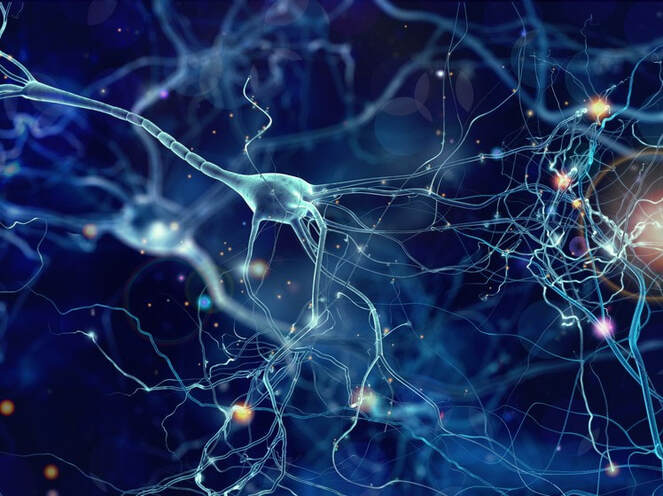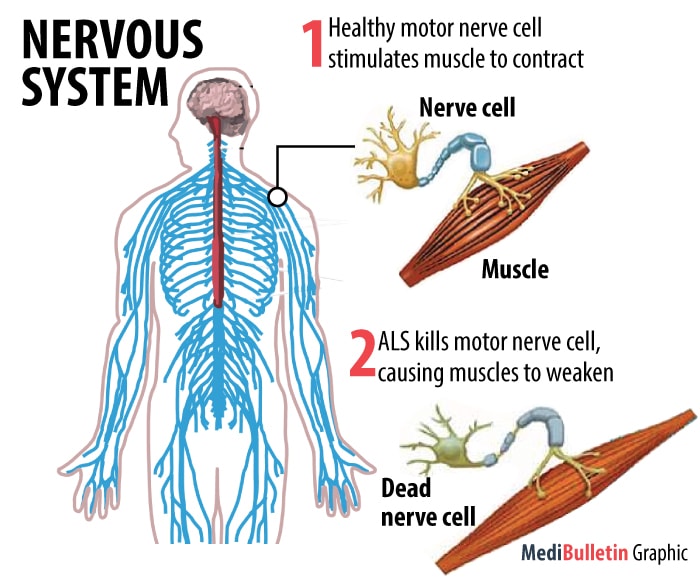 What is MND? Motor Neurone Disease or commonly known as MND is a neurological condition that affects a neurons ability to function properly. Neurons control the muscles that allow us to speak, breathe, swallow and move and when affected by MND these muscles progressively weaken and waste away, as neurons begin to die. Those affected often losing function of their limbs and independence, although their mind and senses generally remain intact, often causing frustration and anger. What is a Motor Neuron? Neurons come in many sizes and types, but a motor neuron controls our muscle contractions. They are able to do this by receiving messages from the spinal cord and sending them through to the muscles, skin or glands that are required to complete the desired action. MND (known as ALS in the US) causes a neuron to gradually deteriorate and eventually die, affecting its ability to transfer messages from the spinal cord to the muscles. As a result, this decreases the body’s ability to control a muscle or contract it, which results in a loss of strength and gradual wasting away. What are the symptoms of MND?
The severity and types of symptoms vary from person to person and also depend on how far progressed the disease is. Some early symptoms can include;
As the disease progresses, symptoms will become more prevalent, these may include;
Who does it affect? MND can develop in any individual and there is no known cure or treatment for this disease. In Australia there are two people diagnosed with MND and two who die from MND, everyday. Once diagnosed with MND the average life expectancy is 2.5 years. Of those diagnosed with MND in Australia, 60% are male and 40% are female and roughly 58% of people diagnosed are under the age of 65. So how can exercise help? As MND progresses the patient’s ability to walk and mobilise decreases, due to significant decreases in muscle strength, joint stiffness and an increase in fatigue. Engaging in regular and structured physical activity enables individuals to continue mobilising and maintain their independence for as long as possible. Focusing on increasing joint range of motion and mobility, increasing muscular strength, specifically in the legs and arms and maintaining both static and dynamic balance to prevent falls from occurring, are all crucial elements in prolonging function in those with MND. A recent study reported that upper leg strength decreases by 35% one year after MND diagnosis, although when specific lower limb strength training was regularly completed, their full strength was maintained for up to 10 months longer after their diagnosis. As a result, this maintained their function for an extended period and provided an improved state of mental health and quality of life. By Aleisha Michael Accredited Exercise Physiologist
1 Comment
ROBINSON
6/8/2021 05:05:18 pm
I don't usually talk much on the internet but I had to open up this time because a miracle happened in my life and my uncle's life. After struggling with Amyotrophic Lateral Sclerosis ALS/MND, and My uncle with Parkinson's Disease too, for five years, We finally got helped by Dr. Ziza's, World Herbs Clinic Head doctor. keeping it to myself will be selfish of me. We used his herbal remedy for Three months and was fully reversed and now we have no symptoms of both condition. I urge you all having ALS/MND, and Parkinson's to give him a try.
Reply
Your comment will be posted after it is approved.
Leave a Reply. |
AuthorSLisa Parkinson Archives
July 2024
Categories
All
|


 RSS Feed
RSS Feed